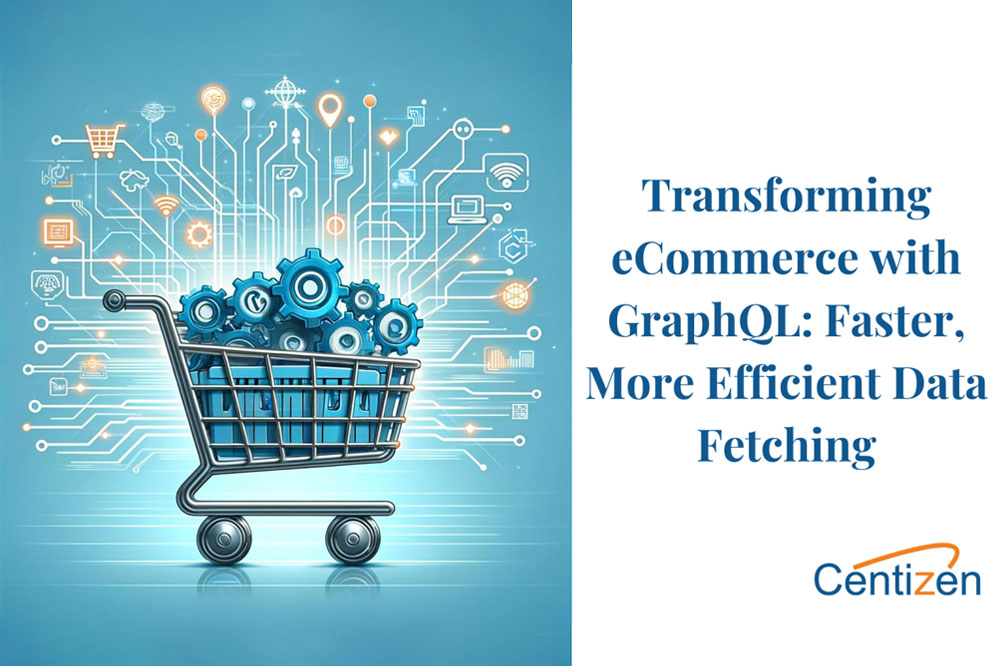Transforming eCommerce with GraphQL: Faster, More Efficient Data Fetching

In eCommerce, staying ahead of technology trends isn’t just beneficial; it’s essential for survival. One such trend that has been making waves is GraphQL. This query language is transforming how platforms interact with data, particularly in contrast to traditional REST APIs. Here’s how GraphQL is enhancing various facets of eCommerce, from improving user experiences to optimizing backend processes.
1. Efficient product information retrieval
In traditional REST setups, fetching comprehensive product details often involves multiple endpoints, which can slow down the process. GraphQL simplifies this by enabling a single query to pull all relevant data—price, descriptions, images, stock levels, and customer reviews—thus speeding up product page rendering and reducing network load.
2. Dynamic search and filtering
GraphQL excels in scenarios where users expect real-time responses, such as during dynamic searches with multiple filters (size, color, brand, price range). It allows users to specify exactly what they need in a single query, which not only cuts down unnecessary data transfer but also optimizes server performance.
3. Real-time inventory updates
Keeping inventory data up-to-date across various client devices is crucial, especially for high-demand items. GraphQL subscriptions push updates to clients in real-time, ensuring that stock levels are always accurate, which is critical during flash sales.
4. Personalized shopping experiences
Unlike REST, which may require multiple calls to craft a personalized shopping experience, GraphQL can fetch a user’s history, preferences, and tailored recommendations in one go. This capability significantly enhances user satisfaction by providing a seamless and customized shopping journey.
5. Optimized multi-device responsiveness
Ensuring optimal performance across multiple devices (mobiles, tablets, desktops) can be cumbersome with REST. GraphQL addresses this by allowing queries to be tailored for specific devices—fetching less data for mobiles, for example, to conserve bandwidth.
6. Streamlined checkout processes
During checkout, customers and servers alike benefit from efficiency. GraphQL consolidates necessary data—from user profiles to payment and shipping options—into a single query, reducing load times and improving conversion rates by simplifying the final steps of the buying process.
7. Simplified promotions and discounts handling
Applying promotions and calculating discounts dynamically can be backend-intensive with REST. GraphQL facilitates this by enabling the frontend to request all relevant promotion and discount data at once, ensuring that users always see the most accurate pricing.
Conclusion
The shift to GraphQL offers significant advantages over traditional RESTful approaches, especially in dynamic and data-intensive environments like eCommerce. By enabling precise and efficient data retrieval, GraphQL not only improves backend performance but also enhances the overall user experience, leading to higher customer satisfaction and increased sales.
Explore Centizen Inc’s comprehensive staffing solutions, custom software development and innovative software offerings, including ZenBasket and Zenyo, to elevate your business operations and growth.
Centizen
A Leading IT Staffing, Custom Software and SaaS Product Development company founded in 2003. We offer a wide range of scalable, innovative IT Staffing and Software Development Solutions.
Contact Us
USA: +1 (971) 420-1700
Canada: +1 (971) 420-1700
India: +91 63807-80156
Email: contact@centizen.com
Our Services
Products
Contact Us
USA: +1 (971) 420-1700
Canada: +1 (971) 420-1700
India: +91 63807-80156
Email: contact@centizen.com






